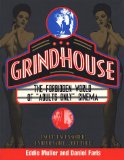Sitting at my desk this afternoon, listening to one of my favourite death metal acts, and what am I thinking about more than anything? That I never ever want to see the opening film for this year’s Melbourne Underground Film Festival. Horror films have been a huge part of my life, starting in early primary school, when I had an enlarged photocopy of Graf Orlock’s iconic shadow pinned to the curtain near my bed, and later on I idolised the dark and mysterious covers of many of the murky films in the local video store I (quite rightly) was held back from seeing – titles like Henry: portrait of a serial killer and Man bites dog. Now in my late twenties, I’ve seen pretty much all of the nasty cinema I would ever hope to see, from the banned promotional video for Nine Inch Nails‘ Broken EP and Irreversible to Antichrist and Martyrs. I’ve still not seen Salò, and after all I’ve seen thus far I doubt I ever will. This is not taking a moral high-ground, mind you – this is emotional self-preservation.
Exploitation films are interesting to look at critically, though. Books such as “Bold! Daring! Shocking! True!”, found in our Arts stacks, point out plenty of examples of such films made over the first half century (and a bit) of cinema that allegations of shock for shock’s sake have been directed at.

Duke University Press, 1999
Which could have been the case, but that doesn’t, these days at least, overshadow the respective excess of the uproar over what was being shown (or alluded to). Like, for example, in Mom and Dad, which gained notoriety (mostly) for containing a full frontal child birth scene (a similar scene was slipped in with little commotion in the Russian film Man with a movie camera nearly two decades earlier, but oh well). Among other films of equivalent infamy, this is covered at length in Grindhouse, another noteworthy title on the topic from our collection.

St. Martin's Griffin, 1996
It’s quite refreshing when looking back on the earlier periods of exploitation cinema, actually. However bad people think things might have been, it’s not a patch on Ichi the Killer or some of the worse September 11 mash-ups that appeared surprisingly soon after that event (and no, I won’t link to them). Course, as Trudy Cooper rightly pointed out on her web-comic Oglaf, if you think about how far the more full-on extremes of today’s pop culture are compared to fifty years ago, then add another fifty years on to the timeline… well, that’s pretty nasty. Maybe there’ll be an identical blog post to this being written then, citing people like me as being overly alarmist. I think I can live with that.
But whatever era they hail from, the makers of exploitation films are generally pretty aware of what they’re making. Well, at least the poster designers are. Check out Exploitation poster art to get a bit of an idea of what I mean. Then hunt down one of the official web-sites for A Serbian film. Yup.

Aurum Press, 2005

